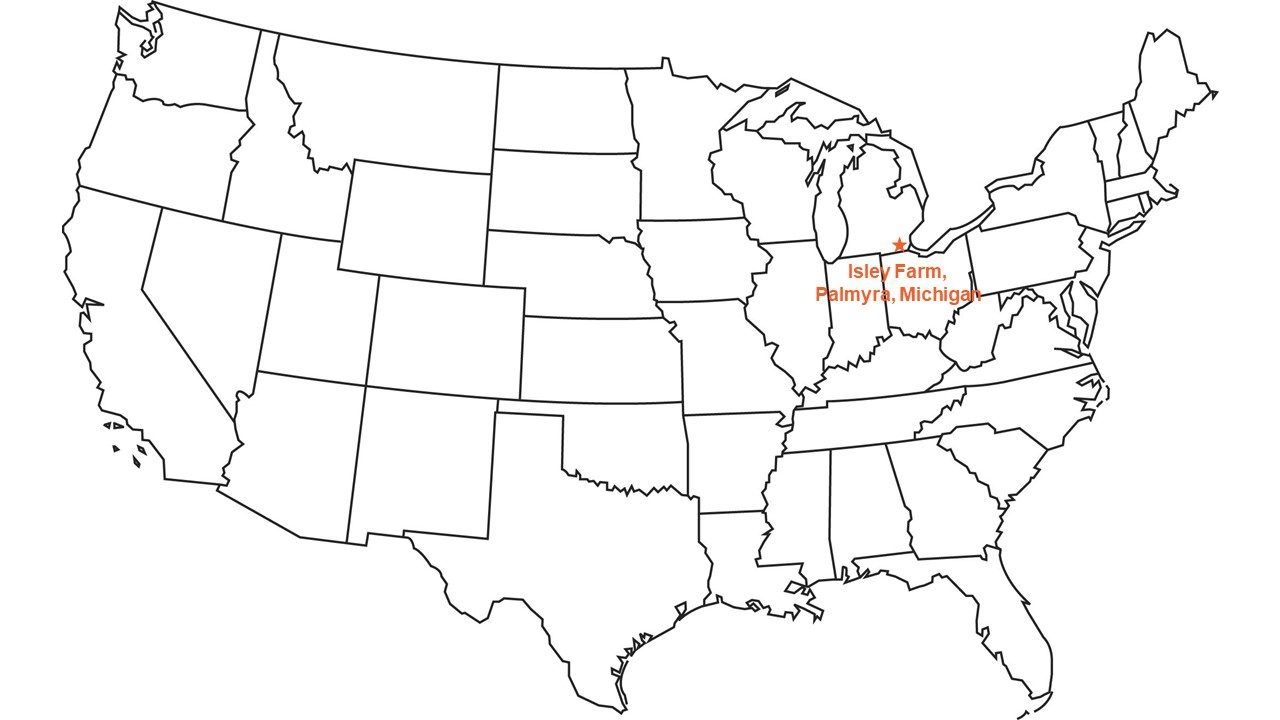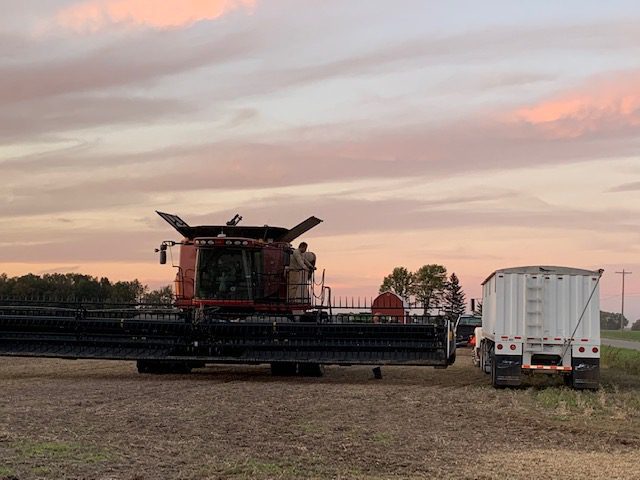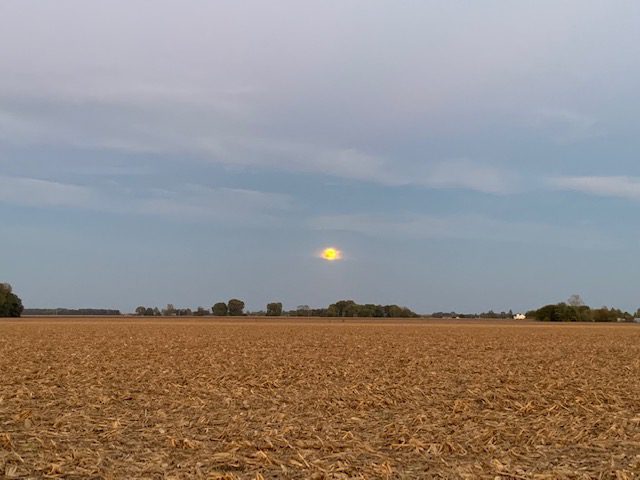 Dry weather allowed us to get an early start on harvest. But the weather changed, as it often does. October brought wet weather, and it was hard to get consecutive days without rain. That has extended the harvest season. On the bright side, we haven’t had major equipment breakdowns or problems getting parts, so when the weather allows, harvest has been running smoothly.
Dry weather allowed us to get an early start on harvest. But the weather changed, as it often does. October brought wet weather, and it was hard to get consecutive days without rain. That has extended the harvest season. On the bright side, we haven’t had major equipment breakdowns or problems getting parts, so when the weather allows, harvest has been running smoothly.
We finished harvesting our soybeans on October 21, just before two storm systems brought more than 11 cm, or 4.5 inches, to our region of the eastern U.S. Midwest during the last week of the month. We worked late before the rains came to finish the last soybean field. Based on the amount of moisture that came and the length of time required for fields to dry out, we are very thankful we made that decision. Overall, our soybean yields were about 10% below average.
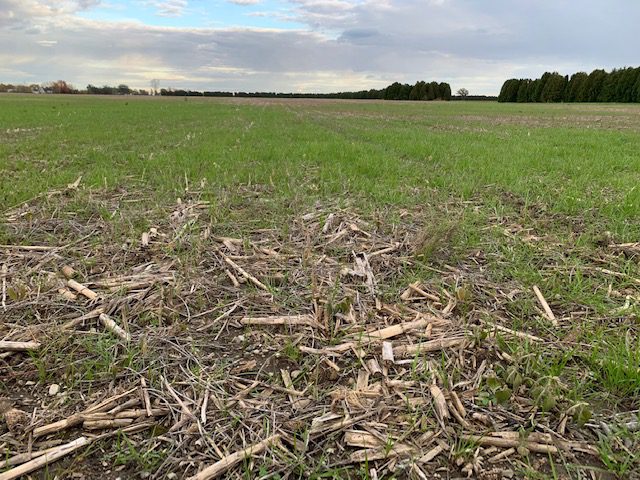 Once our fields dried out at the beginning of November, we continued harvesting our remaining 140 hectares, about 350 acres, of corn. Depending on the weather, it will take a couple weeks to finish harvesting this crop. While we haven’t had a hard freeze yet, we have had frosty morning and cooler temperatures. We often wait for the frost to dry off the crop before we start harvesting each day. So far, our corn yields have been at the top of our average yield range this year. We’ve been pleased.
Once our fields dried out at the beginning of November, we continued harvesting our remaining 140 hectares, about 350 acres, of corn. Depending on the weather, it will take a couple weeks to finish harvesting this crop. While we haven’t had a hard freeze yet, we have had frosty morning and cooler temperatures. We often wait for the frost to dry off the crop before we start harvesting each day. So far, our corn yields have been at the top of our average yield range this year. We’ve been pleased.
We hope to have enough time after harvest to complete fall tillage before the ground freezes. Every fall, we strip-till the soybean fields that will be planted to corn next year. That means we disturb a narrow strip in the soil and apply fertilizer in it. Next spring, we will plant corn directly into that strip. However, if we get a hard freeze, this work will have to wait.
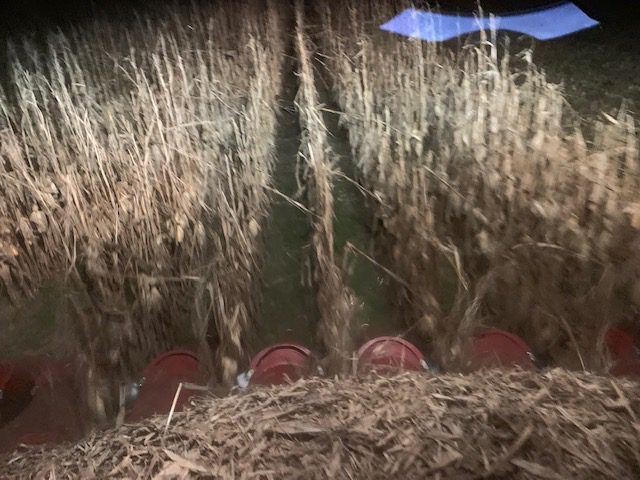 While rains have slowed harvest and strip-tilling, they have also encouraged our cover crops to germinate and grow. Their roots help our soils absorb all the rain we’ve been getting, so that water doesn’t sit on the soil surface. Cover crops also fight soil compaction.
While rains have slowed harvest and strip-tilling, they have also encouraged our cover crops to germinate and grow. Their roots help our soils absorb all the rain we’ve been getting, so that water doesn’t sit on the soil surface. Cover crops also fight soil compaction.
We believe our sustainability practices help us improve both our environment and our profitability. Because we don’t want to lose those benefits, we are very careful about not driving our heavy equipment into fields before they are dry enough. We don’t want to cause soil compaction. Ideally, we want our soils to be about 50% solids and organic material, 25% water and 25% air, all mixed together, so microorganisms thrive in the soil. Compaction packs down the solid particles so that the air and water have less room to fit into cracks between them.
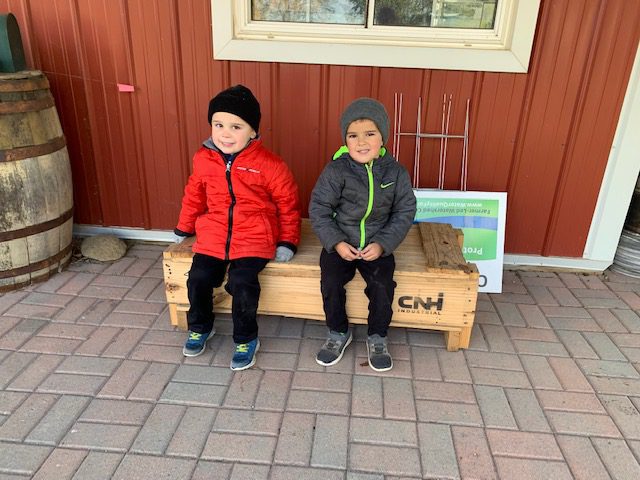 We are farming for the future. Each day we make decisions that are impacted by that choice. Harvest is always a special time on the farm. It can be stressful, but we value the time spent together and the opportunity to produce safe, healthy and abundant food for our customers around the world.
We are farming for the future. Each day we make decisions that are impacted by that choice. Harvest is always a special time on the farm. It can be stressful, but we value the time spent together and the opportunity to produce safe, healthy and abundant food for our customers around the world.
This field update is funded by the soybean checkoff. To share or republish part or all of this Ground Work 2021 article, please link to the original article and credit www.USSOY.org.
